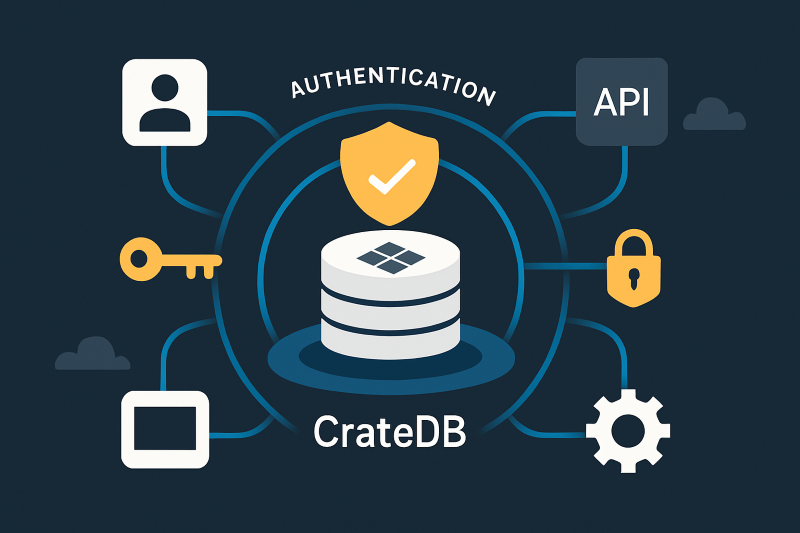Authentication
Authentication is the first line of defense in database security. CrateDB ensures that every connection, whether from an application, user, or AI agent, is properly authenticated before access is granted. This protects your clusters from unauthorized use while maintaining the flexibility needed for modern, distributed deployments.
CrateDB supports both password-based authentication and integration with external identity systems, making it adaptable to different enterprise environments and deployment models.

How authentication works
When a client connects to CrateDB (via the PostgreSQL Wire Protocol, HTTP endpoint, or driver), the system verifies identity through one or more configured mechanisms.
- User accounts and credentials: Each database user has an associated password or authentication method stored securely within the cluster.
- Transport Layer Security (TLS): All authentication exchanges can be encrypted using TLS/SSL to prevent credential interception.
- Token-based authentication: (CrateDB Cloud) Access tokens and scoped credentials simplify secure access from applications and services.
- Integration with identity providers: (Private Cloud / On-prem) Connect CrateDB to your internal authentication systems (LDAP, Active Directory, or SSO) for centralized identity management.

Why it matters
- Access control begins with verification: Only authenticated users can access the cluster.
- Centralized management: Simplify identity handling across teams, applications, and automation tools.
- Defense in depth: Combine authentication with RBAC, encryption, and auditing for a layered security approach.
- Compliance alignment: Authentication policies support enterprise security standards (ISO 27001, SOC 2).

Best practices
- Enforce strong passwords and rotations for all local users.
- Use TLS connections to protect credentials during transmission.
- Integrate with corporate identity providers for centralized account management.
- Regularly review and disable inactive accounts.
- Use scoped tokens or service accounts for automation and applications instead of shared credentials.

CrateDB architecture guide
This comprehensive guide covers all the key concepts you need to know about CrateDB's architecture. It will help you gain a deeper understanding of what makes it performant, scalable, flexible and easy to use. Armed with this knowledge, you will be better equipped to make informed decisions about when to leverage CrateDB for your data projects.
